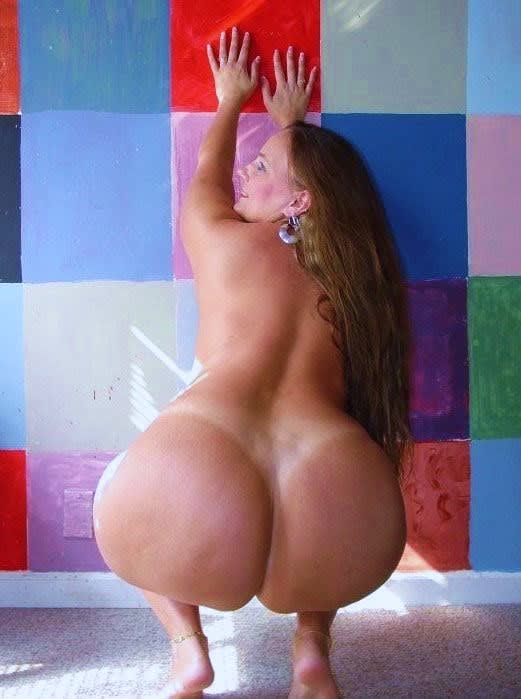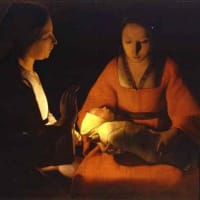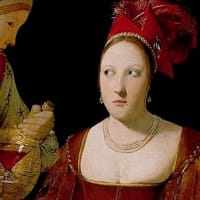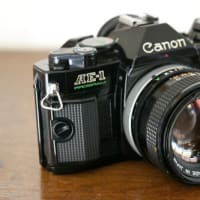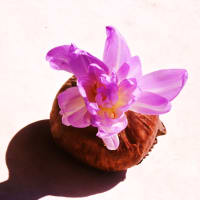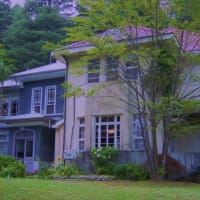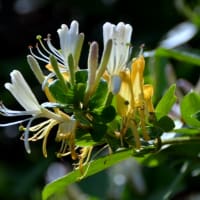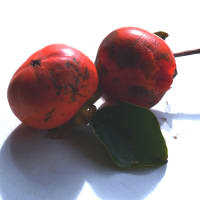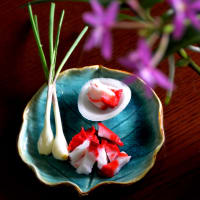フランティシェク・クプカ
František Kupka
1871年 9月 22日 東ボヘミアのオポチノに生まれ、近郊のドブルシュカで育つ。
1957年 6月 24日 ピュトーで没。
以下は未整理の、メモ ( 主に、Wikipedia より)
František Kupka (September 23, 1871 - June 24, 1957) was a Czech painter and graphic artist. He was a pioneer and co-founder of the early phases of the abstract art movement and Orphic cubism (Orphism). Kupka's abstract works arose from a base of realism, but later evolved into pure abstract art.
アブストラクト芸術
フランチシェク・クプカ ( 1871 9 23 ― 1957 6 24 ) はチェコ人の画家であり、グラフィック・アーティストでもあった。彼は、アブストラクト芸術の先駆けだった。写実主義から発して、のちに純粋アブストラクト、つまり抽象形態主義へと、先鋭化していった。

La case photo de Got
、チェコ人は画家とグラフィック・アーティストでした。 彼は、抽象芸術運動とオルフェウスのキュービズム(オルフェウス教)の初期の段階の先駆者と共同創設者でした。 クプカの抽象的な作品はリアリズムのベースから生じたが、後で純粋抽象芸術に発展しました。
EducationFrantišek Kupka was born in Opočno, eastern Bohemia (now Czech Republic) in 1871. From 1889 to 1892, he studied at the Prague Art Academy. At this time, he painted historical and patriotic themes. Kupka enrolled at the Akademie der Bildenden Künste in Vienna, where he concentrated on symbolic and allegorical subjects. He was influenced by the painter and social reformer Karl Wilhelm Diefenbach (1851-1913) and his naturistic life-style. Kupka exhibited at the Kunstverein, Vienna, in 1894. His involvement with theosophy and Eastern philosophy dates from this period. By spring 1894, Kupka had settled in Paris; there he attended the Académie Julian briefly and then studied with Jean-Pierre Laurens at the Ecole des Beaux-Arts.
EducationFrantišekクプカは、Opočno(1871年の東部ボヘミア(現在チェコ共和国))で生まれました。
1889年から1892年まで、彼はプラハ芸術アカデミーで勉強しました。 このときに、彼は歴史で愛国的なテーマを塗りました。 クプカはウィーンでAkademie der Bildenden Künsteで登録しました、そこで、彼は記号的で寓意的な主題に集中しました。 彼は、画家と社交的な改革者カール・ウィルヘルムDiefenbach(1851-1913)とnaturisticなライフスタイルによって影響されました。 1894年にKunstverein(ウィーン)で示されるクプカ。 見神論と東部地方の哲学との彼の関係は、この期間から始まります。 1894年春までには、クプカはパリに住みつきました; そこで、彼は短くAcadémieジュリアンに付き添って、そして、Ecole 12月ボーザールでジャン・ピエール・ローランスと勉強しました。
CareerKupka worked as an illustrator of books and posters and, during his early years in Paris, became known for his satirical drawings for newspapers and magazines. In 1906, he settled in Puteaux, a suburb of Paris, and that same year exhibited for the first time at the Salon d'Automne. Kupka was deeply impressed by the first Futurist Manifesto, published in 1909 in Le Figaro. Kupka’s 1909 painting Piano Keyboard/Lake marked a break in his representational style. His work became increasingly abstract around 1910–11, reflecting his theories of motion, color, and the relationship between music and painting (orphism). In 1911, he attended meetings of the Puteaux Group (Section d'Or). In 1912, he exhibited at the Salon des Indépendants in the Cubist room, although he did not wish to be identified with any movement. Creation in the Plastic Arts, a book Kupka completed in 1913, was published in Prague in 1923.
CareerKupkaは本とポスターのイラストレーターとして働いて、パリの彼の若い頃の間、新聞と雑誌のために彼の皮肉な図面のために明らかとなりました。 1906年に、Puteaux、パリの郊外とSalon d'Automneで初めて示されるその同じ年に、彼は定まりました。 クプカは最初の未来派宣言にひどく感動しました。そして、ル・フィガロで1909年に発表されました。 クプカの1909人の絵Piano Keyboard/レイクは、彼の代表のスタイルの中断をマークしました。 彼の仕事は、ますます1910–11のまわりで抽象的に、運動、色と音楽と絵画(orphism)の関係の彼の理論を表しているようになりました。 1911年に、彼はPuteauxグループ(セクションd'Or)の会議に出席しました。 1912年に、彼は立体派の部屋でSalon 12月でIndépendantsを示しました、しかし、彼はいかなる運動とも同一視されたくありませんでした。 Plastic Arts(クプカが1913年に完成させた本)の創造は、1923年にプラハで発表されました。
 source
source
Plans par couleurs, grand nu, cca 1909
In 1931, he was a founding member of Abstraction-Création. In 1936, his work was included in the exhibition Cubism and Abstract Art at the Museum of Modern Art in New York City, and in an important show with another excellent Czech painter Alphonse Mucha at the Jeu de Paume in Paris. A retrospective of his work took place at the Galerie Mánes in Prague in 1946. The same year, Kupka participated in the Salon des Réalités Nouvelles, where he continued to exhibit regularly until his death. During the early 1950s, he gained general recognition and had several solo shows in New York.
1931年に、彼はAbstraction-天地創造の創立メンバーでした。 1936年に、ニューヨーク市の近代美術館の展示キュービズムと抽象芸術で、そして、もう一人の優れたチェコの画家アルフォンス・ミュシャがパリのジュードポームにある重要なショーで、彼の仕事は含まれました。 彼の仕事の回顧展は、1946年にプラハでGalerieマニで行われました。 同じ年、クプカはSalon 12月Réalités Nouvellesに参加しました、そこで、彼は死まで定期的に展示へと延びていました。 1950年代初期の間に、彼は一般的な認知を得て、ニューヨークでいくつかのソロ・ショーを催しました。
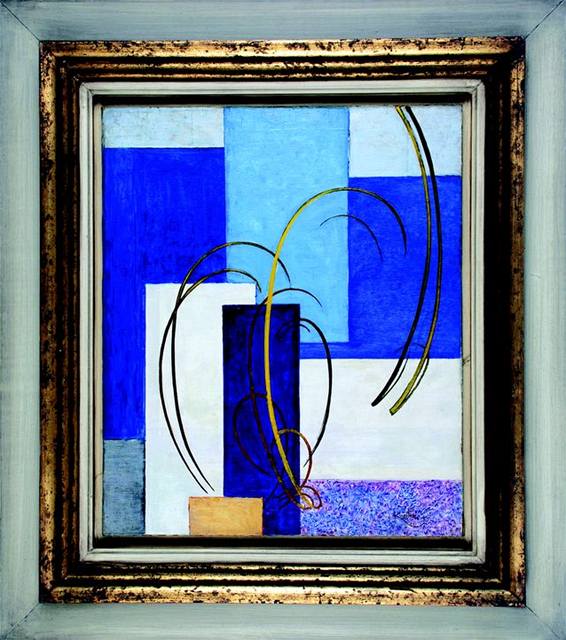
1925 - 1930
olej, plátno, isorel
55 x 46 cm
sign. PD Kupka
Between 1919 and 1938 Kupka was financially supported by his good friend, art collector and industrialist Jindřich Waldes who accumulated a substantial collection of his art. Kupka died in 1957 in Puteaux, France.
WorkKupka had a strong interest in color theory. His decadent 1907 self-portrait The Yellow Scale prefigures his abstract emphasis on color. Around 1910 he began developing his own color wheels, adapting a format previously explored by Sir Isaac Newton and Hermann von Helmholtz. This work in turn led Kupka to execute a series of paintings he called "Discs of Newton" (1911-12). Kupka was interested in freeing colors from descriptive associations. His work in this area is thought to have influenced other artists like Robert Delaunay.
1919~1938年に、彼の親友、芸術コレクターと彼の芸術の相当なコレクションを集めた実業家インジヒWaldesで、クプカは財政的に支えられました。 クプカは、Puteaux(フランス)で、1957年に死にました。
WorkKupkaは、カラー理論に強い関心がありました。 Yellow Scaleが彼の抽象的な強調を予示する彼の頽廃的な1907の自画像は、色がつきます。 1910年ごろに、彼は彼自身の色相環を開発し始めました。そして、以前ヘルムホルツのアイザク・ニュートンとヘルマンによって調査されるフォーマットを適応させました。 この仕事は、クプカに順番に、彼が「ニュートンのディスク」(1911-12)と呼んだ一連の絵を仕上げさせました。 クプカは、色を図形協会から解放することに興味を持っていました。 この地域の彼の仕事は、ロベール・ドローネーのような他のアーティストに影響したと考えられます。
Planes by Colors (aka Great Nude), circa 1909,
Guggenheim Museum, New York.Planes by Colors
The Colored One
Reminiscence of a Cathedral
Blue Space
Works in Peggy Guggenheim Collection, Venice, Italy:
Study for Woman Picking Flowers (Femme cueillant des fleurs), cca 1910
Study for Amorpha, Warm Chromatics, Chromatique chaude and for Fugue in Two Colors (Fugue a deux couleurs), cca 1910-1911
Vertical Planes (Plans verticaux), 1911-1912
Study for Organization of Graphic Motifs I (Localisations de mobiles graphiques I), cca 1911-12
Around a point (Autour d'un point), cca 1920-1925
フランティセック・クプカまたはフランチシェク・クプカ(František Kupka, 1871年9月23日 - 1957年6月24日)は、20世紀の画家。抽象絵画・非具象絵画の最初期の作家の1人。遅くとも、1911年から1912年にかけて制作された抽象作品が存在する。フランチセック・クプカと表記する場合もある。
オーストリア=ハンガリー帝国領東ボヘミア(現チェコ)のオポチノに生まれ、パリ郊外のピュトーにて没する。
ウィーンの美術アカデミーで学ぶ。初期には、幻想的な具象絵画を制作している。その後パリに移り、具象絵画から、キュビスムの影響を受けて次第に抽象化が進み、1911年から1912年ごろには完全な抽象絵画に至った。1910年代、1920年代は、カラフルで有機的な抽象作品であったが、1931年には、アプストラクシオン・クレアシオン(1930年代の抽象絵画参照)の主要メンバーともなり、1930年代には、幾何学的傾向が強まっていった。
一般に、オルフィスムの画家に分類されることが多い。
日本における主要な展覧会 [編集]クプカ展(1994年・愛知県美術館・宮城県美術館・世田谷美術館)
Czech Republic チェコ共和国



















